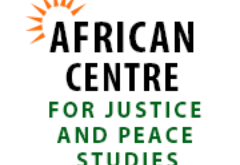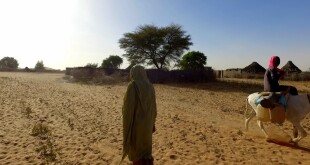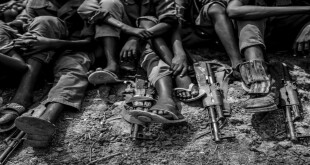(3 September 2011) On the 28th and 29th of August, the Sudanese ruling National Congress Party (NCP) moved significant military forces – comprised of Popular Defense Forces (PDF), national security, and Sudanese Armed Forces (SAF) – with heavy military equipment intoBlue Nile state.
Blue Nile state is one of the contentious “three areas” claimed by both the Sudan Peoples’ Liberation Movement (SPLM) and the NCP. It was given special status along with South Kordofan in the 2005 Comprehensive Peace Agreement (CPA) that provided for the administration of the state to be shared between the two parties until the elections, and for a popular consultation to take place after the elections to assess popular opinions of the administration of the state under the CPA. Although Blue Nile state is located firmly within Northern Sudan, there remains significant SPLM/A presence in the state, and the SPLM Northern Sector’s Chairman, Malik Agar, won the race for governor in the April 2010 elections.
With the resurgence of fighting between the SPLM and the NCP in South Kordofan in June, many analysts stated that it was a matter of time until the fighting spread to Blue Nile. The decision to move military troops and equipment into the state indicates that the government of Sudan is looking to expand the war into Blue Nile state. Forces and equipment have been distributed around the capital town of Al Damazein.
On September 1st at 11:00 PM the joint forces of SAF and the PDF opened fire on a three car SPLM convey carrying a delegation out of Al Damazein at the town’s southern checkpoint. The fire was returned and fighting moved inside the town to the areas of Al Nahda, the crops market, the industrial area and the nearby NCP military headquarters.
Later the same night, the popular militia, brought from Khartoum by aircraft, attacked the SPLM residential area in Al Mustshareen sector and open fire on the house of Governor Malik Agar, killing members of his guards and arresting others. Witnesses say that the Sudanese government forces fired on anyone that appeared to be affiliated with the SPLM and arrested some others.
Heavy military equipment from the North has been distributed inside the civilians sectors in the town including in Hai Alganes where witnesses say they saw five tanks and three military landcruisers with doshka guns mounted to them. Witnesses said that around 30 civilians were killed as a result of the fighting and many others were injured.
The NCP and SPLM have suffered more than 200 fatalities and approximately 500 more were injured in the fighting. Following the initial fighting, the SPLM is in control of Albao, Kurmuk and Gisaan and the rest of the state remains under NCP control.
The fighting has caused around 50,000 civilians – mostly women, children, and elderly men – to flee Al Damazein and Al Rusairis towns into Sennar state. The Northern military forces have closed the main road linking Blue Nile to Sennar, causing those fleeing the areas of fighting to have to take more difficult roads impacted by the rainy season.
On 2 September, Sudanese President Omar Al Bashir declared a state of emergency in BlueNile and suspended the application of the interim constitution there. A series of presidential orders were issued, including one removing the elected governor Malik Agar and installing a military governor to replace him. Far from protecting civilians, the state of emergency allows the Northern militias and the SAF to arrest and try anyone suspected of affiliation with the SPLM. In this context, it is possible that anyone who is not a member of NCP may be targeted for arrest and summary trial.
On 3 September, aircraft continued to bomb SPLM areas. The main water reservoir in Al Damazein was destroyed in the bombardment, possibly in a deliberate attempt to deprive the population of this essential resource. About 75 bodies have been confirmed to be present in the Al Damazein morgue. The hospital has declared an emergency. Clashes have continued in the Hai Alzira area. The NCP has called all remaining civilians in Al Damazein and Al Rusairis to gather inside the military headquarters as a safe area.
The seriousness of the situation in Blue Nile and the potential for repetition of serious violations of international law in Southern Kordofan and Darfur require urgent action by the international community. At this stage, it will be urgent to focus on the protection of civilians, ensuring humanitarian access, and facilitation of ceasefire negotiations. It will be critical to ensure that the citizens of Blue Nile State have access to humanitarian assistance in the coming days and weeks. The NCP should not be allowed to prevent this access as they have done in the Nuba Mountains in South Kordofan.
The declaration of the war in Blue Nile – in addition to fighting in Darfur and South Kordofan and the stalemate in Abyei – increases the number of civilians at risk in Sudan. It is worth noting that these regions of Northern Sudan are the ones most populated by persons that identify as having African rather than Arab ethnicity. The international community must therefore monitor the rights of these ethnic groups and take urgent steps to prevent the exacerbation of their situation. The need for monitoring is all the more urgent because constitutional protections have been suspended in the state. Mechanisms like the special court established by Bashir in a Presidential Decree are likely to simply give legal cover to the targeting of members of the SPLM and violate the right of defendants to a fair trial.
 African Centre for Justice and Peace Studies ACJPS | المركز الافريقي لدراسات العدالة و السلام
African Centre for Justice and Peace Studies ACJPS | المركز الافريقي لدراسات العدالة و السلام




One comment
Pingback: Photo Essay: Blue Nile Refugee Camp Falling Apart | GIRIFNA